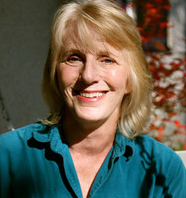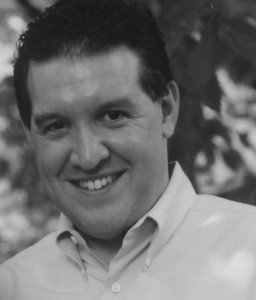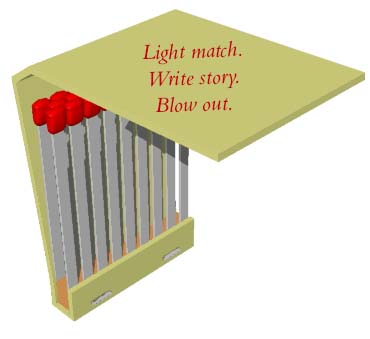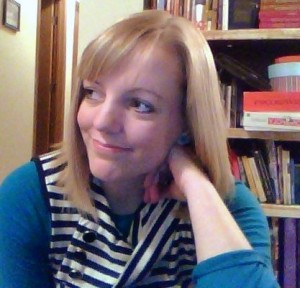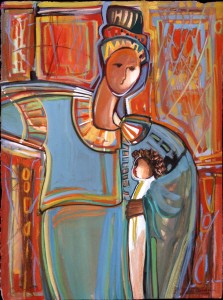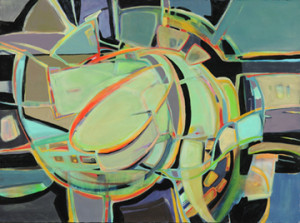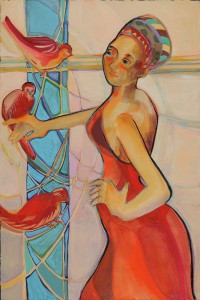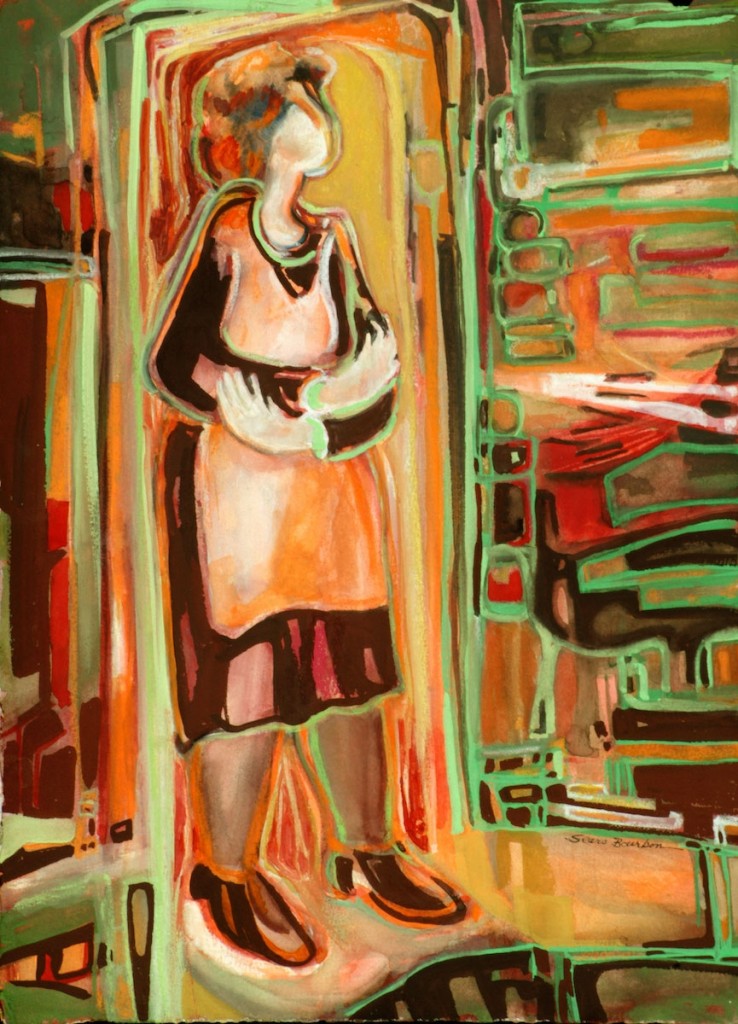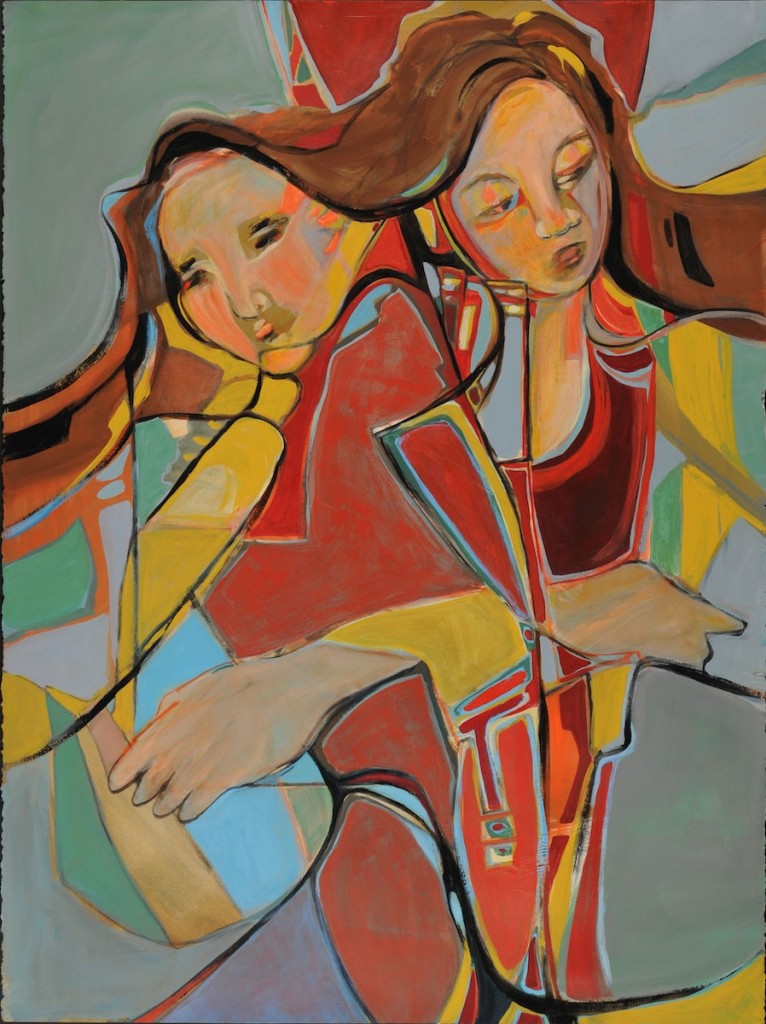Valerie Fioravanti: Sue, your flash piece “Heartbreaker” appeared in the Shorts on Survival section of r.kv.r.y., and it seems to me that survival is a recurrent theme in your work. Would you agree?
Sue Staats. I think so. Life throws you off cliffs and puts you in front of speeding trains. It’s interesting to me how people deal with this, especially if it’s unexpected, like the birth of a damaged child.
VF. So you agree with the writing adage only trouble is interesting?
SS. Probably, although I’ve always defined “trouble” as broadly as possible!
VF. “Heartbreaker” makes some lovely lyric shifts, from considering the perspective of the father, to the narrator, to the child. The effect is a full-bodied brevity. Is this something you strive for in your shortest fiction/work?
SS. What I’m striving for, I think, is the complexity of that place between humans where understanding takes place. Or, in the case of this story, the complex nature of heartbreak caused—unwittingly—by the child. Often the conventional POV structure—where you’re forced to choose between first person and some form of omniscient narrator—doesn’t quite work for me. Sometimes you can slide into a sort of middle ground, which is what I tried to do in this story. I think the fact that it’s so short, so brief,literally a “flash” helps. The reader can take it in quickly and it works, in their minds, as a whole, complex piece.
VF. You primarily write fiction, but you also write poetry and creative nonfiction. What
draws you to writing across genres?
SS. I love the splash and dribble of poetry. It’s a perfect venue for expanding the little moment. And sometimes—cliché alert—truth is stranger, and more wonderful and compelling, than fiction. And sometimes it’s not, and I just have to make up a better ending, or shove in a character who was nowhere near the actual event. And then I’ve made fiction. I do find that I have to use different parts of my writer brain so I can’t switch easily between them.
VF. Can you discuss what those different parts are?
SS. Writing poetry—and flash—I can indulge the writer brain that loves to roll around in language, metaphor, and /images. Writing fiction, or non-fiction, I’m focused on character, what changes happen, what’s the story arc. And for me, these really have become two different ways of writing. They require a different kind of attention.
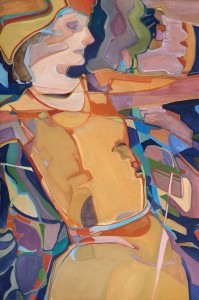
VF. What writing project are you currently focused upon?
SS. I’m currently in revision hell on a loosely-linked collection of short stories with the working title “Olive Street Stories,” and submitting pieces from that for (I hope) publication and eventual marketing as a collection, possibly even winning a contest. Like you, Valerie! My bio mentions I’m working on a novel and yes, that’s still somewhere in the works but frankly, at this point I’m way more interested in these short stories, which are full of strange turns of life, odd smells and many, many animals, not all of them four-footed. Although I do not write about werewolves…
VF.Beware the allure of short stories! As someone with a second collection in line to follow her first, I’m clearly smitten with the short form. Why are you?
SS. I think because it allows me to focus on the heart of a story and allow it to expand, to stand on its own. I don’t have to try and fold it into the context of a longer piece. This may be the result of my short attention span, or it may just be because I’m way more interested in the crux of that “interesting trouble” you were referring to earlier than I am in the past or the future of my character.
VF. What can a short story collection offer that a novel cannot?
SS. Do you mean for the writer or the reader? Because for the reader, short stories offer the opportunity to dip into a scene or event, inhabit it, and then come up for air. Wash the dishes, put in a load of laundry, come back and read another story. For the writer? It’s probably easier to amass a collection of short stories than to write an entire novel: certainly there are more ways you can get short stories published. And I read somewhere that the old adage that “you can’t get a collection of short stories published” isn’t so true anymore. I’d say the success of some recent short story collections points in that direction, wouldn’t you?
VF. I think short story collections have always been published, although sparingly—particularly in comparison to novels—and that remains true. Now, “Heartbreaker”
appears amid some fine company in the Winter 2013 issue of r.kv.r.y. Which piece struck a particular chord with you?
SS. I agree: it’s a fine issue with some deep and powerful stuff from outstanding writers. I feel lucky to be included. My favorites, I think—and believe me, it’s not an easy decision—are Paul Austin’s “Cry Like My Wife,” and Randall Brown’s “Mindlessly.”
Valerie Fioravanti is the author of the linked collection Garbage Night at the Opera, which
won the Sharat Chandra Prize for Short Fiction from BkMk Press (UMKC). Her essay
“Touching Margaret Atwood” appeared in the Fall 2011 issue of r.kv.r.y.

